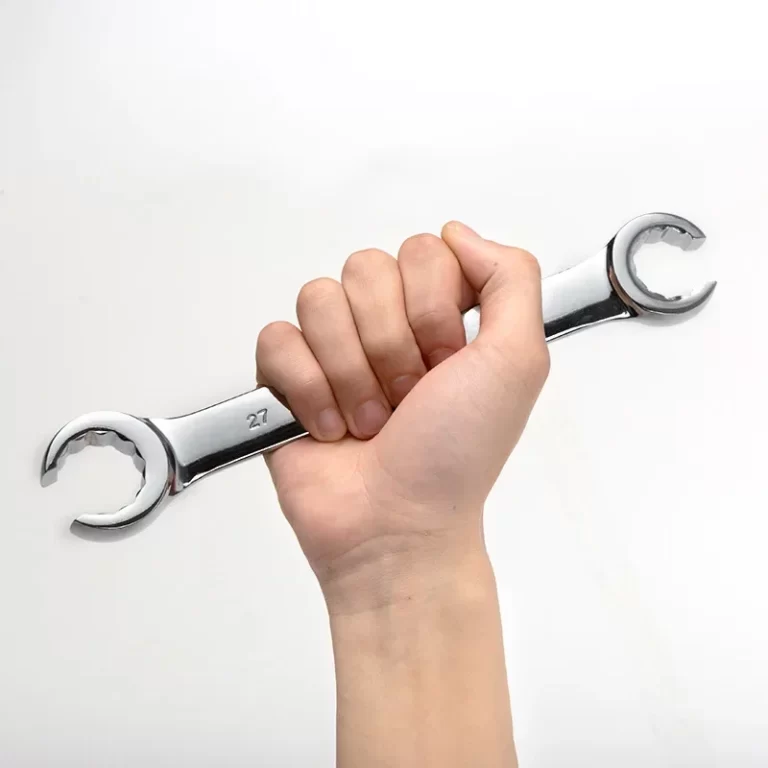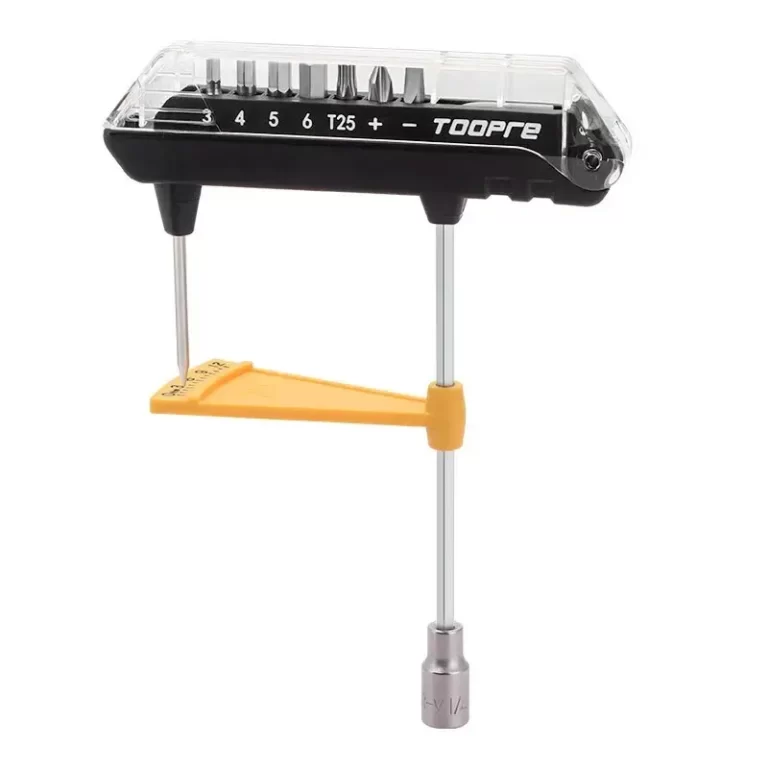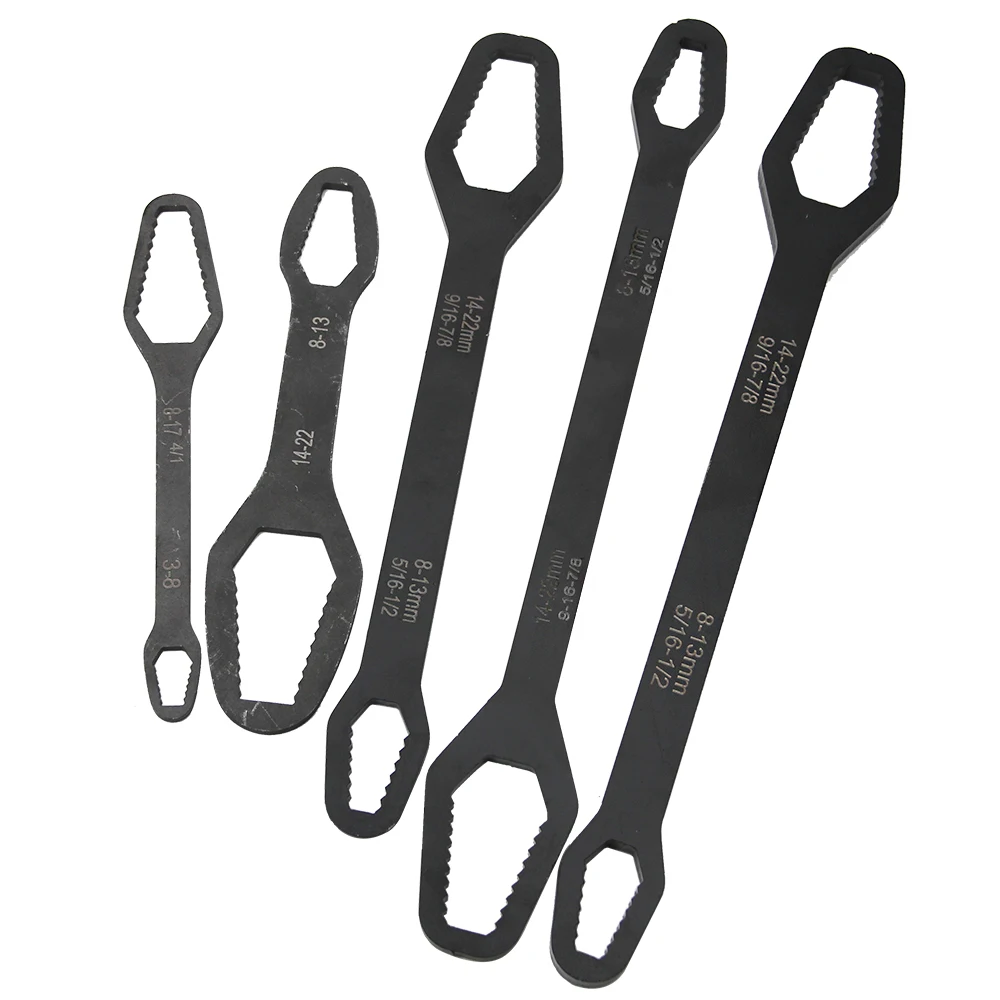
Why Every DIYer Needs a Box Wrench: A Comprehensive Guide
What is a Box Wrench?
A box wrench is a versatile hand tool used for tightening or loosening nuts and bolts. It features a closed-loop design that encloses the fastener, providing a more secure grip. Box wrenches are essential in various settings, including automotive repair, household projects, and industrial applications. Let’s delve deeper into its characteristics and history.
Definition and Key Features
Box wrenches are defined by their closed-end design, which fully surrounds the fastener head. This design reduces the risk of slipping compared to open-end wrenches. The tool is commonly available in single-ended or double-ended configurations, with each end accommodating different sizes. Some box wrenches feature a 6-point head for greater contact with the fastener, while others have a 12-point head for improved accessibility in tight spaces.
Key features include:
- Enhanced Grip: Fully envelops the fastener, minimizing rounding and slippage.
- Size Precision: Designed for specific metric or imperial measurements, ensuring a snug fit.
- Durability: Commonly made of high-strength materials like steel for long-lasting performance.
- Variations: Variants like offset or ratcheting box wrenches provide added functionality.
These features make box wrenches indispensable for tasks requiring precision and torque.
History and Evolution of Box Wrenches
Box wrenches have evolved significantly over time. The concept of wrenches dates back to the early 19th century. Initially, wrenches were rudimentary tools without specific designs for enclosed gripping. The box wrench emerged as a solution to the limitations of earlier tools, such as slipping and damaging fasteners.
Over time, manufacturers introduced new materials, finishes, and ergonomic designs. Technological advancements led to the creation of ratcheting mechanisms, allowing faster operation without repositioning the tool. Today, box wrenches come in various styles and sizes, catering to diverse needs across industries.
In summary, the box wrench remains a staple in toolkits worldwide due to its reliability and efficiency.
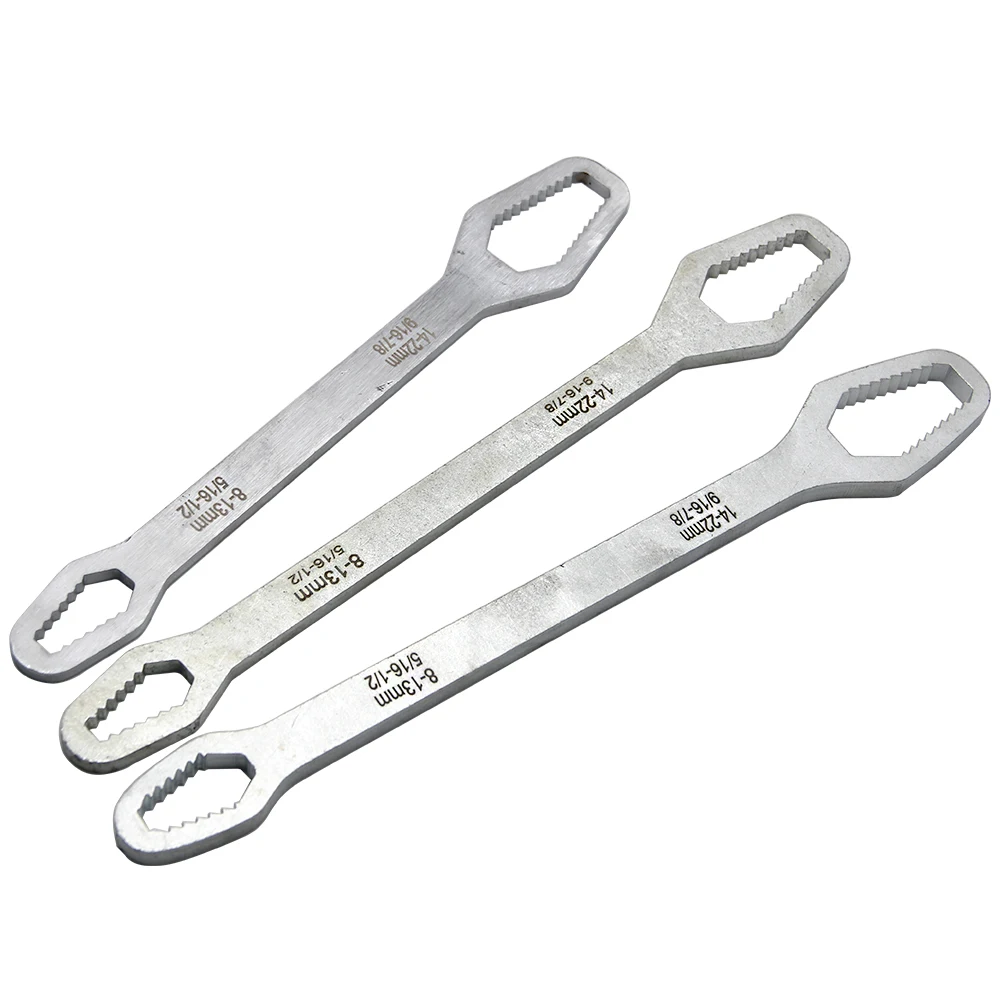 Types of Wrenches
Types of Wrenches
Box wrenches come in a variety of styles suited for different tasks. Understanding these types will help in choosing the right tool for the job. Let’s explore the main variants of box wrenches.
Single-Ended vs. Double-Ended Box Wrenches
Single-ended box wrenches have one closed-end head per tool. Each wrench is made for one size. This simplicity makes them lightweight and easy to store.
Double-ended box wrenches, on the other hand, feature two heads. Each end is suited for different fastener sizes. This design offers versatility and reduces the need for multiple tools.
Offset Box Wrenches
Offset box wrenches are designed with an angled head. This feature helps access fasteners in tight or awkward spaces. The offset angle reduces knuckle scraping during use. They are ideal for tasks with limited room.
Ratcheting Box Wrenches
Ratcheting box wrenches are equipped with a built-in ratcheting mechanism. This allows continuous rotation without removing the wrench. It saves time when loosening or tightening multiple fasteners. These wrenches provide excellent efficiency in repetitive tasks.
Specialized Box Wrenches
Specialized box wrenches are built for unique applications. Examples include flare-nut wrenches for hydraulic fittings or thin-wall wrenches for tight areas. These tools meet specific needs in industries like plumbing or machinery repair.
Understanding the different types of box wrenches will ensure the right tool is used for every job.
Materials and Construction
Understanding the materials and construction of box wrenches is crucial for their performance and longevity. Manufacturers design these tools to withstand high stress and perform reliably across various tasks.
Common Materials Used in Manufacturing
Box wrenches are commonly made from strong and durable metals:
- Steel: Most box wrenches are crafted from high-grade steel. Carbon steel provides strength, while alloy steel improves corrosion resistance.
- Chrome Vanadium: This material adds toughness and enhances durability, making it ideal for heavy-duty use.
- Stainless Steel: Stainless steel offers resistance to rust and corrosion, ensuring the wrench lasts longer.
Some specialized wrenches use lightweight aluminum for tasks that require less torque. The chosen material depends on the intended application and durability required.
Importance of Strength and Durability
Strength and durability are vital for box wrenches to handle demanding tasks:
- High Torque Resistance: Box wrenches must withstand the pressure of tightening or loosening stubborn fasteners.
- Minimized Wear: Durable materials reduce the risk of deformation or rounding of the wrench.
- Consistent Performance: Long-lasting tools keep maintaining their precision and grip over time.
High-quality construction ensures safety while working and reduces the need for frequent replacements.
Coatings and Finishes for Longevity
Coatings and finishes enhance the lifespan and functionality of box wrenches:
- Chrome Plating: Prevents rust and adds a shiny, easy-to-clean surface.
- Matte Finish: Reduces glare and improves grip during use.
- Protective Layers: Some wrenches feature specialized coatings to withstand extreme conditions, such as chemical exposure.
Proper coatings ensure the tool remains intact in harsh environments and prolonged use. These features protect your investment and keep the wrench ready for your next project.
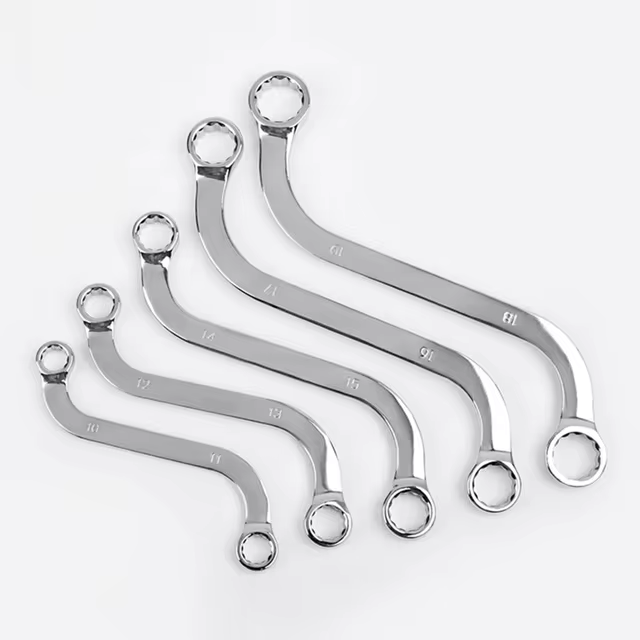 Uses of Wrenches
Uses of Wrenches
Box wrenches are essential tools for various applications. Their versatile design ensures reliable performance across industries and household tasks. This section explores their widespread uses.
Common Applications in Automotive Repair
Box wrenches are widely used in automotive repair because of their secure grip and precision. Mechanics rely on them when working with vehicle components like engines, brake systems, and suspension parts. Ratcheting box wrenches save time by allowing continuous rotations for loosening or tightening bolts. Offset versions excel in tight spaces, such as under car hoods or near transmission systems. Box wrenches minimize fastener damage, ensuring vehicles function safely.
Household Uses and DIY Projects
Box wrenches are handy for household tasks and DIY projects. They help assemble furniture, repair appliances, and tighten plumbing fixtures. For example, they are ideal for fixing faucets, valves, or attaching curtain rods. Double-ended wrenches provide flexibility for handling various sizes within one tool. Their durable construction ensures reliable performance during home repairs. DIY enthusiasts often choose box wrenches for their ease of use and precision.
Industrial and Professional Applications
Industrial professionals rely on box wrenches for demanding jobs. These tools are essential in manufacturing, construction, and machinery maintenance. Specialized box wrenches, like flare-nut wrenches, support tasks such as hydraulic fittings. Chrome vanadium variants handle heavy-duty use without wear or deformation. In professional settings, box wrenches improve efficiency and reduce downtime during repairs. Their robust grip and torque resistance make them perfect for critical applications.
In summary, box wrenches are versatile tools used across automotive, household, and industrial tasks. Their strength and precision make them indispensable for any toolkit.
How to Choose the Right Wrench
Selecting the right box wrench enhances your efficiency and ensures proper handling. Consider these guidelines:
Sizing Guide: Understanding Metric and Imperial Measurements
Understanding wrench sizing is crucial for a snug and secure fit on fasteners.
- Metric Measurements: Suited for metric fasteners, common in European and international products. Sizes are in millimeters (e.g., 10mm, 15mm).
- Imperial Measurements: Used for fasteners with inch-based sizes, popular in American products. Examples include 1/4-inch or 1/2-inch.
- Size Labels: Always check the size label marked on the wrench or consult a sizing chart.
- Avoid Slippage: A correct size minimizes slippage and prevents rounding of the fastener.
Factors to Consider: Offset, Grip, and Material
The design of the wrench can impact its effectiveness for your tasks.
- Offset Design: Offset box wrenches are better for tight or awkward spaces. The angled head gives better access, especially for recessed bolts.
- Grip and Control: A textured or ergonomic grip enhances control and reduces hand fatigue during use.
- Material Durability: Opt for chrome vanadium or high-grade steel for strength and longevity. Lightweight aluminum may suffice for lighter tasks but tends to wear faster.
- Ratcheting Mechanism: Consider a ratcheting box wrench for continuous adjustments without repositioning. It saves time in repetitive tasks.
Recommended Brands and Models for Quality
Choosing a quality tool ensures reliability and performance, even in demanding jobs. Top-rated brands include:
- Snap-on: Known for high-quality and durable wrenches, suitable for professionals and heavy-duty tasks.
- Craftsman: Offers affordable and reliable options, popular among DIY enthusiasts.
- Gearwrench: Specializes in ratcheting wrenches with efficient mechanisms and easy usability.
- Stanley: Provides good-quality tools for casual and professional use. Their wrenches balance cost and durability.
- Tekton: Famous for budget-friendly options without compromising quality and construction.
In conclusion, focus on sizing, material, and design features while selecting a box wrench. High-quality tools can handle stress, last longer, and ensure better results for all tasks.
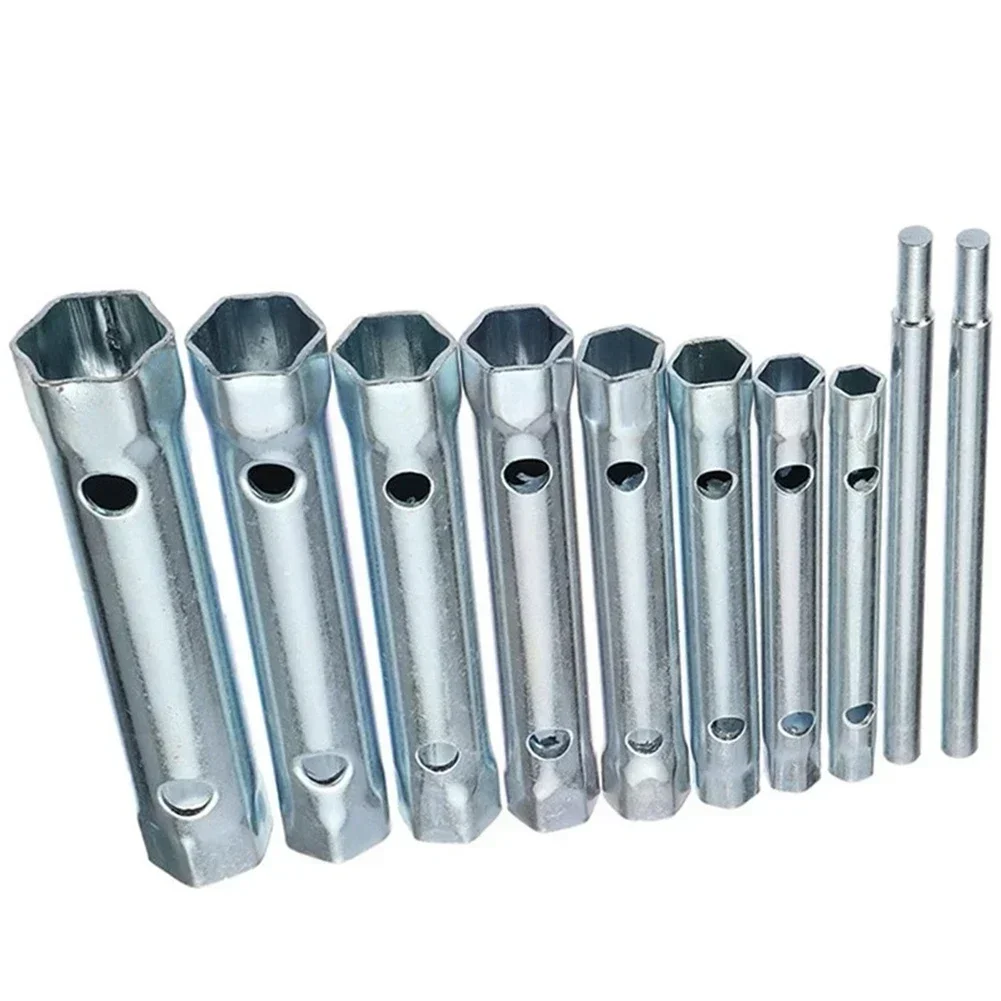 Maintenance and Care
Maintenance and Care
Proper maintenance keeps your box wrenches in good condition for a long time. Cleaning, storage, and preventive measures are key. Follow these tips to ensure optimal performance and longevity.
Cleaning and Proper Storage Tips
- Clean After Use: Wipe off dirt, grease, and debris after every use. Use a dry cloth or mild cleaner.
- Remove Stubborn Dirt: If grime remains, use a brush with a touch of soap and warm water. Dry completely.
- Inspect for Damage: Check for cracks, rust, or deformation during cleaning to prevent future issues.
- Store Safely: Store box wrenches in a toolbox or on a tool rack. Keep them in a dry environment away from moisture.
- Use Organizer Trays: Use trays or holders to sort wrenches by size for quick access during tasks.
Proper care ensures your tools remain functional and saves money on replacements.
Preventing Rust and Corrosion
- Apply Protective Coatings: Use rust inhibitors or a thin layer of oil to protect against moisture.
- Avoid Humid Storage: Store tools in a dry environment with low humidity to prevent rust formation.
- Air-Tight Storage: Use silica gel packs or desiccants in your toolbox to absorb excess moisture.
- Clean After Wet Use: Dry the wrench thoroughly if exposed to water to prevent corrosion.
Rust prevention ensures your wrench maintains its performance and aesthetic quality over time.
When to Replace Your Box Wrench
- Check Size Accuracy: Replace if the wrench slips or no longer fits snugly onto fasteners.
- Inspect for Cracks: Discontinue use if cracks or breaks are visible to avoid accidents.
- Test Ratcheting Mechanisms: Replace ratcheting wrenches if the mechanism fails to grip or rotate properly.
- Worn Coating: Replace if coatings wear off, exposing the tool to rust or reduced durability.
Timely replacement ensures safety and prevents tool failure during critical tasks.
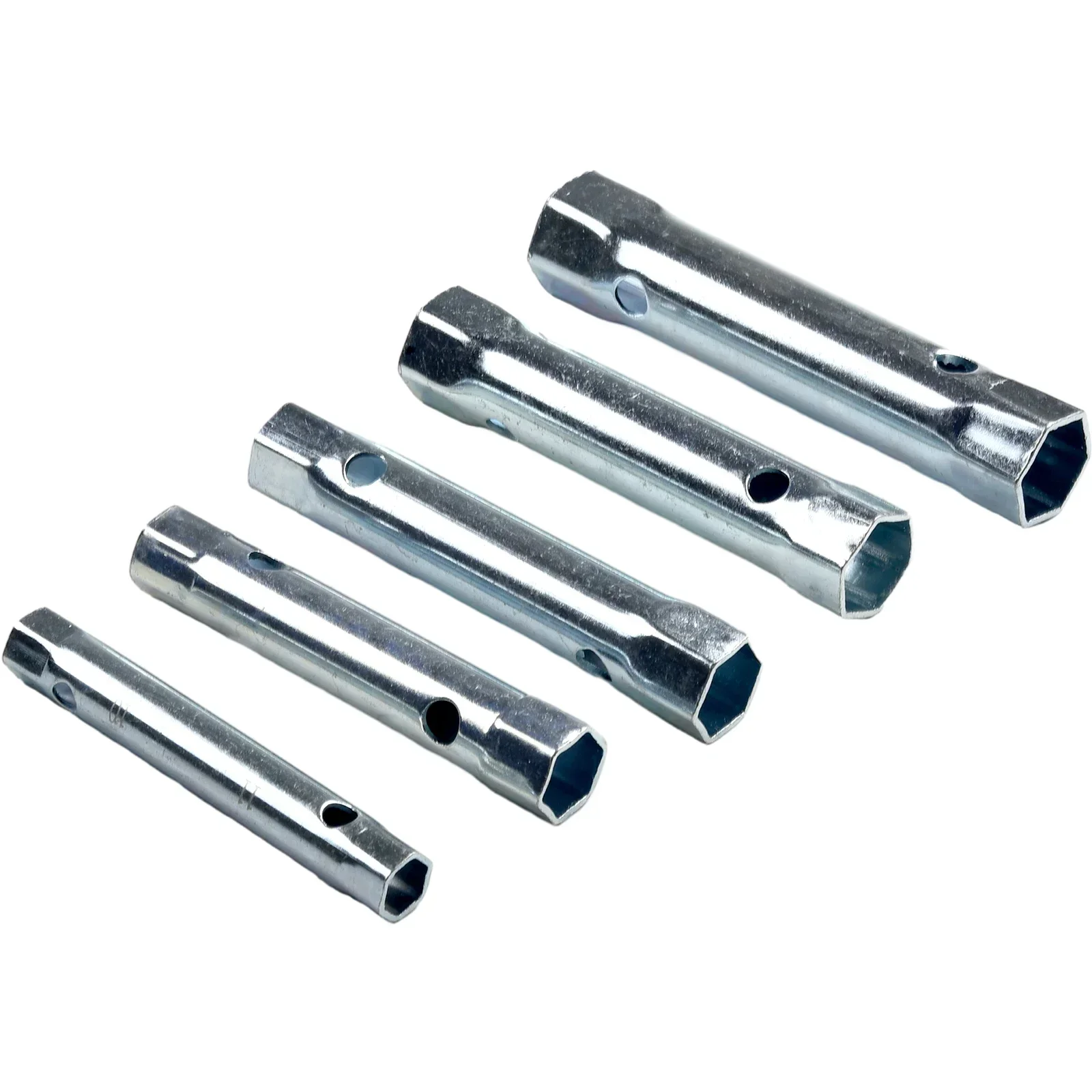 Box Wrenches vs. Other Types of Wrenches
Box Wrenches vs. Other Types of Wrenches
When selecting the right wrench for a task, it’s essential to understand how box wrenches compare to other types. Each wrench design has unique strengths and weaknesses. Let’s explore these comparisons to better guide your choices.
Differences Between Box Wrenches and Open-End Wrenches
Box wrenches and open-end wrenches serve different purposes:
- Design: Box wrenches have closed-loop ends; open-end wrenches have U-shaped open ends.
- Grip: Box wrenches fully enclose the fastener for a better grip and reduced slippage. Open-end wrenches fit over two opposing sides and can slip more easily.
- Fastener Damage: Box wrenches distribute force evenly, minimizing fastener rounding. Open-end wrenches have a higher risk of rounding corners.
- Accessibility: Open-end wrenches are better for fittings in straight-line spaces. Box wrenches excel in tight or awkward spots, especially with offset options.
- Precision: Box wrenches require exact size matches, while open-end wrenches can handle slight size variations.
Benefits of Box Wrenches Compared to Adjustable Wrenches
Box wrenches differ significantly from adjustable wrenches in terms of functionality and reliability:
- Size Fit: Box wrenches are non-adjustable, ensuring a precise fit with no looseness. Adjustable wrenches can slip if not tightened properly.
- Durability: Box wrenches are stronger due to their fixed-size design. Adjustable wrenches may weaken over time.
- Torque Application: Box wrenches apply torque more evenly, reducing the chance of damaging the fastener. Adjustable wrenches sometimes concentrate force unevenly.
- Efficiency: Ratcheting box wrenches save time in repetitive tasks. Adjustable wrenches need repositioning for each rotation.
- Weight and Bulk: While adjustable wrenches are versatile, box wrenches are lighter and easier to maneuver.
Situations Where Box Wrenches Excel
Box wrenches outperform other types in specific scenarios:
- Tight Spaces: Offset box wrenches reach fasteners in cramped or recessed areas easily.
- High Torque Needs: The solid grip and closed-end design handle high-pressure applications better.
- Repetitive Tasks: Ratcheting box wrenches allow faster and efficient operations for multiple fasteners.
- Undisturbed Fasteners: Their snug fit avoids damaging delicate or painted surfaces on fasteners.
- Automotive Repairs: Box wrenches are ideal for cars due to the precision and strength needed under the hood.
Box wrenches are versatile, precise, and reliable tools. They stand out in tasks requiring accuracy and strength.
 Tips and Tricks for Using Wrenches Effectively
Tips and Tricks for Using Wrenches Effectively
Mastering box wrench usage requires attention to detail and proper techniques. These tips will improve your project results and prolong tool life.
Proper Techniques for Tightening and Loosening
- Ensure the Correct Fit: Select the right wrench size for a snug fit on the fastener.
- Position the Wrench Properly: Fully enclose the fastener with the wrench to avoid slippage.
- Use Controlled Force: Apply steady pressure to prevent damaging the fastener or wrench.
- Pull, Don’t Push: Pull the wrench toward you for better control and reduced injury risk.
- Utilize Ratcheting Features: Use ratcheting wrenches for faster adjustments without repositioning.
- Check Alignment: Keep the wrench square on the fastener to ensure even torque distribution.
How to Avoid Common Mistakes
- Avoid Using the Wrong Size: Mismatched sizes can damage fasteners and cause rounding. Double-check before use.
- Don’t Over-Torque: Excess force may break the wrench or fastener. Apply just enough pressure to tighten.
- Keep Tools Clean: Dirt or grease can reduce grip and increase slippage. Clean before and after use.
- Avoid Improvisation: Do not use box wrenches for tasks they are not designed for.
- Inspect for Wear: Replace worn or damaged wrenches to maintain efficiency and safety.
Enhancing Efficiency with Box Wrenches
- Plan Workspaces: Arrange tools and fasteners beforehand for smoother tasks without interruptions.
- Use Organizers: Sort wrenches by size for quick identification during work.
- Leverage Offset Designs: Offset wrenches are perfect for tight or awkward spaces.
- Choose Ratcheting Models: Ratcheting wrenches save time, especially for repetitive fastening tasks.
- Stay Consistent: Practice using correct techniques to build speed and precision.
By using these tips, box wrenches can become efficient tools in your everyday projects.
